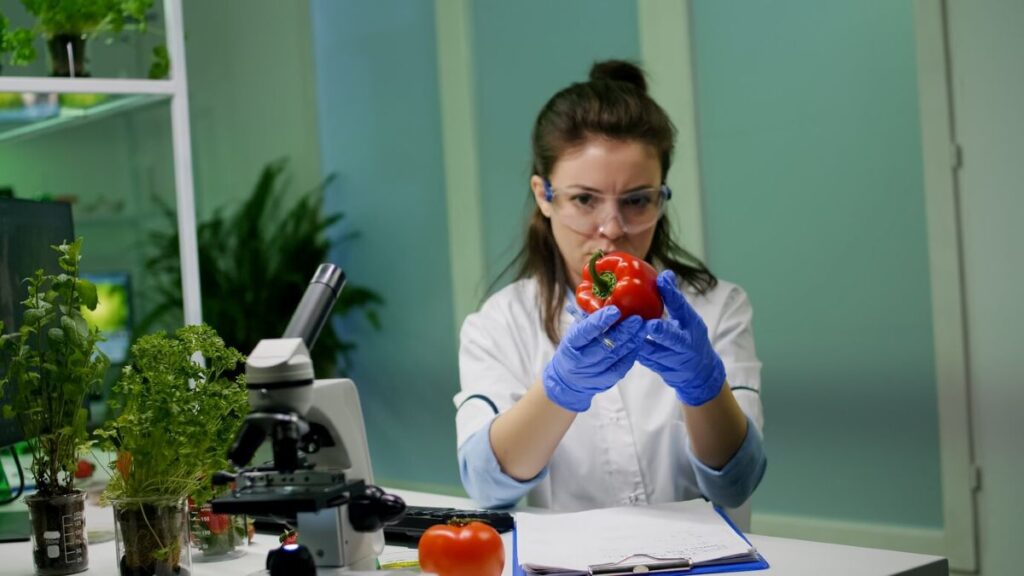Temperature control is crucial in the food industry to ensure safety and compliance with Hazard Analysis and Critical Control Points (HACCP) regulations. Effective temperature monitoring solutions not only safeguard food quality but also help businesses avoid costly penalties. This article explores the top five temperature monitoring solutions that can assist in achieving HACCP compliance.
Understanding HACCP Compliance
HACCP is a systematic approach to food safety that identifies and controls potential hazards throughout the food production process. It is essential for businesses to implement robust monitoring systems to ensure that food is stored, cooked, and served at safe temperatures. Non-compliance can lead to foodborne illnesses, legal repercussions, and damage to a brand’s reputation.
Temperature monitoring solutions is a critical component of HACCP, as it helps to identify any deviations from safe temperature ranges. By utilising effective monitoring solutions, businesses can ensure that they are consistently meeting food safety standards.
Moreover, the importance of training staff in HACCP principles cannot be overstated. Employees must be well-versed in the procedures and protocols that underpin the system, as their adherence to these guidelines directly impacts food safety. Regular training sessions can help reinforce the significance of HACCP compliance, ensuring that all team members understand their roles in maintaining high standards. This not only fosters a culture of safety within the workplace but also empowers employees to take ownership of their responsibilities.
In addition to temperature monitoring, businesses should also consider implementing a comprehensive record-keeping system. Documenting every step of the food production process, from sourcing ingredients to final delivery, provides a clear audit trail that can be invaluable during inspections or in the event of a food safety incident. This meticulous approach not only aids in compliance but also enhances overall operational efficiency, as it allows businesses to identify trends and areas for improvement. By investing in both staff training and robust documentation practices, companies can significantly bolster their HACCP compliance and, ultimately, their commitment to food safety.
1. Wireless Temperature Monitoring Systems
Wireless temperature monitoring systems have revolutionised the way businesses track temperature data. These systems use sensors to continuously monitor temperatures and transmit data in real-time to a central dashboard. This allows for immediate action if temperatures deviate from the set range.
Benefits of Wireless Systems
One of the key advantages of wireless temperature monitoring is the reduction in manual data entry. This not only saves time but also minimises the risk of human error. Additionally, many wireless systems offer alerts via SMS or email, ensuring that staff can respond promptly to any temperature fluctuations. The automation of data collection also allows employees to focus on more critical tasks, enhancing overall productivity within the workplace.
Real-Time Data Access
Access to real-time data is invaluable for businesses. Managers can monitor temperature trends over time, allowing for better decision-making and proactive management of food safety. This feature is particularly beneficial for businesses with multiple locations, as it enables centralised monitoring from a single platform. Furthermore, the integration of cloud technology in these systems means that data can be accessed remotely, providing flexibility for managers who may need to oversee operations while on the move. This capability not only enhances operational efficiency but also fosters a culture of accountability, as staff can be held responsible for maintaining the required temperature standards.
Moreover, the data collected by these systems can be invaluable for compliance purposes. Many industries, particularly food and pharmaceuticals, are subject to stringent regulations regarding temperature control. Wireless monitoring systems can generate detailed reports that demonstrate adherence to these regulations, simplifying the audit process and reducing the risk of penalties. By having a reliable record of temperature data, businesses can also identify patterns that may indicate potential issues, allowing for preventative measures to be implemented before problems arise.
2. Data Loggers
Data loggers are another effective solution for temperature monitoring. These devices record temperature readings at set intervals and store the data for later analysis. They are particularly useful for businesses that require detailed temperature records for compliance purposes.
Types of Data Loggers
There are various types of data loggers available, including USB, Wi-Fi, and Bluetooth-enabled options. USB data loggers are ideal for smaller operations, while Wi-Fi loggers provide real-time monitoring capabilities. Bluetooth loggers are perfect for businesses that need to access data on the go.
Compliance and Reporting
Data loggers often come with software that simplifies reporting for HACCP compliance. This software can generate detailed reports, making it easier for businesses to demonstrate adherence to food safety regulations during audits. The ability to provide clear, concise records can significantly enhance a company’s credibility.
3. Cloud-Based Monitoring Solutions
Cloud-based temperature monitoring solutions offer a modern approach to HACCP compliance. These systems store temperature data in the cloud, allowing for easy access from anywhere with an internet connection. This flexibility is particularly advantageous for businesses with multiple sites or remote operations.

Scalability and Integration
Cloud-based solutions are highly scalable, making them suitable for businesses of all sizes. They can easily integrate with existing systems, such as inventory management and point-of-sale systems, providing a comprehensive view of operations. This integration can lead to more efficient processes and improved overall food safety.
Enhanced Security
Data security is a significant concern for businesses, and cloud-based solutions often come with robust security features. With encrypted data storage and regular backups, businesses can have peace of mind knowing that their temperature records are safe and secure.
4. Smart Thermometers
Smart thermometers are an innovative solution for temperature monitoring, particularly in food preparation areas. These devices can provide instant readings and often come with features such as Bluetooth connectivity and smartphone apps for easy tracking.
Instant Readings and Alerts
Smart thermometers are designed for speed and accuracy. They can deliver instant temperature readings, which is crucial in fast-paced environments like commercial kitchens. Many models also offer alerts for temperature deviations, allowing staff to take immediate corrective action.
Versatility in Use
These thermometers are versatile and can be used in various applications, from checking the temperature of cooked meats to monitoring the temperature of refrigeration units. Their portability makes them an essential tool for any food business aiming to maintain HACCP compliance.
5. Integrated Temperature Monitoring Systems
Integrated temperature monitoring systems combine various monitoring technologies into a single platform. These systems can monitor temperature across multiple locations, including storage areas, cooking equipment, and serving stations, providing a comprehensive solution for HACCP compliance. Visit https://www.fda.gov/food/hazard-analysis-critical-control-point-haccp/haccp-principles-application-guidelines to get more about HACCP principles and application guidelines.
Centralised Control
With an integrated system, businesses can centralise temperature monitoring, making it easier to manage operations and ensure compliance. This centralised control allows for real-time monitoring and alerts across all areas, reducing the risk of temperature-related issues.
Customisation and Reporting
Many integrated systems offer customisation options, allowing businesses to tailor the solution to their specific needs. Additionally, the reporting features can provide valuable insights into temperature trends and compliance history, which can be beneficial during audits and inspections.
Choosing the Right Solution
When selecting a temperature monitoring solution for HACCP compliance, businesses should consider several factors, including their size, budget, and specific needs. Each of the solutions discussed has its unique advantages, and the right choice will depend on the individual requirements of the business.
Budget Considerations
Budget is often a significant factor in decision-making. While some solutions may require a higher initial investment, they can lead to long-term savings by reducing food waste and preventing compliance issues. It is essential to weigh the costs against the potential benefits to determine the best fit.
Future-Proofing Your Business
As technology continues to evolve, businesses should consider solutions that offer scalability and adaptability. Investing in a temperature monitoring system that can grow with the business will ensure ongoing compliance and efficiency in the long run.

Conclusion
Temperature monitoring is a vital aspect of HACCP compliance, and choosing the right solution can significantly impact food safety and operational efficiency. Whether opting for wireless systems, data loggers, cloud-based solutions, smart thermometers, or integrated systems, businesses have various options to ensure they meet regulatory requirements.
By investing in effective temperature monitoring solutions, businesses can not only protect their customers but also enhance their reputation and operational success. The right system will provide peace of mind, knowing that food safety is being prioritised and maintained.
Related : The Future of Wireless Temperature Monitoring in Australia
